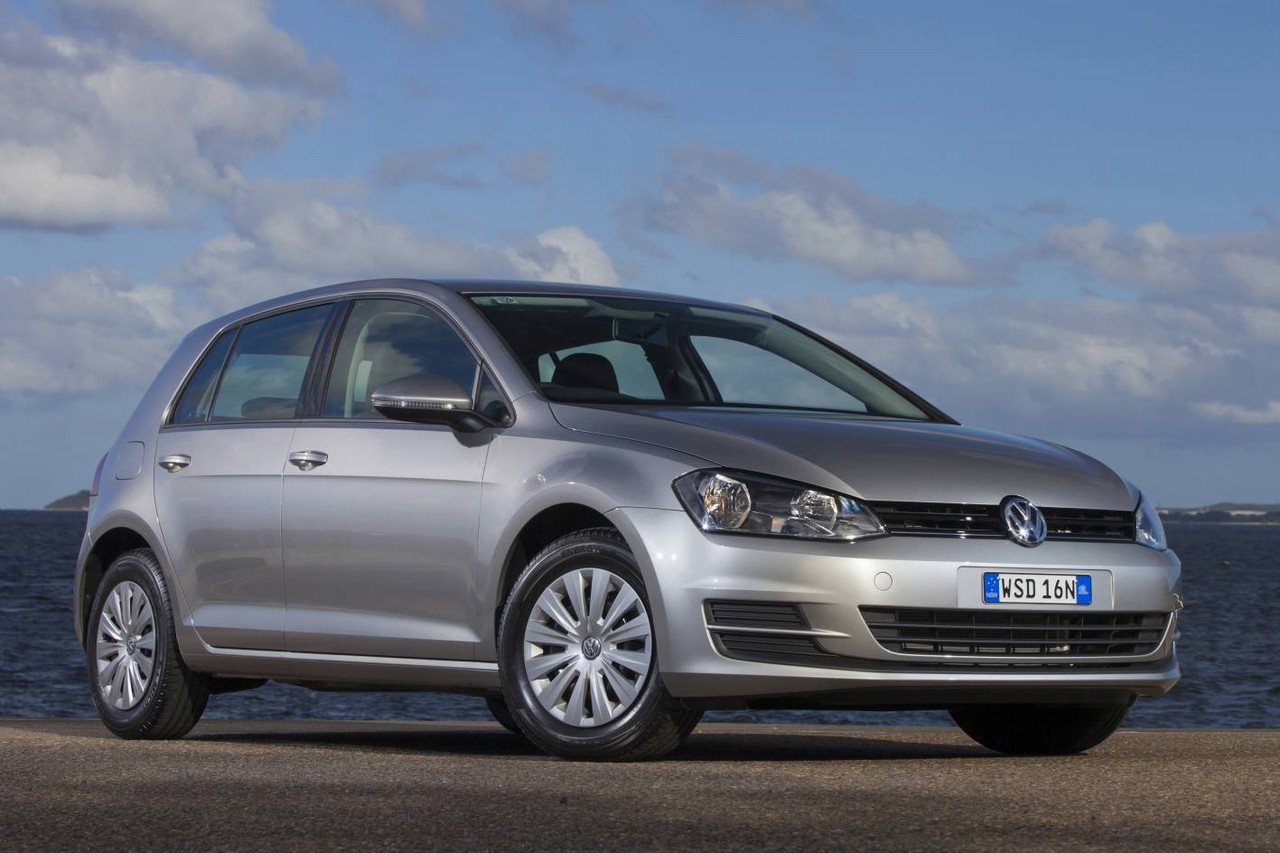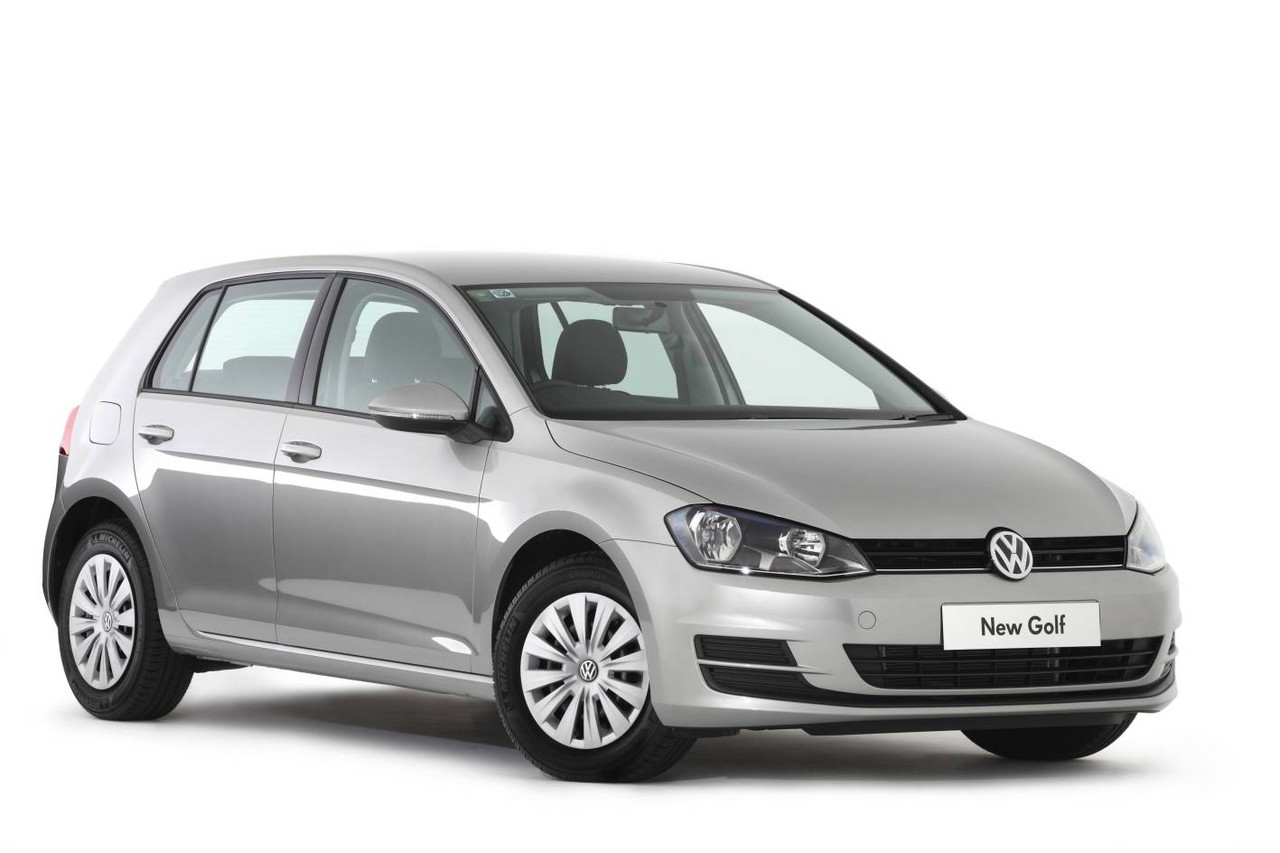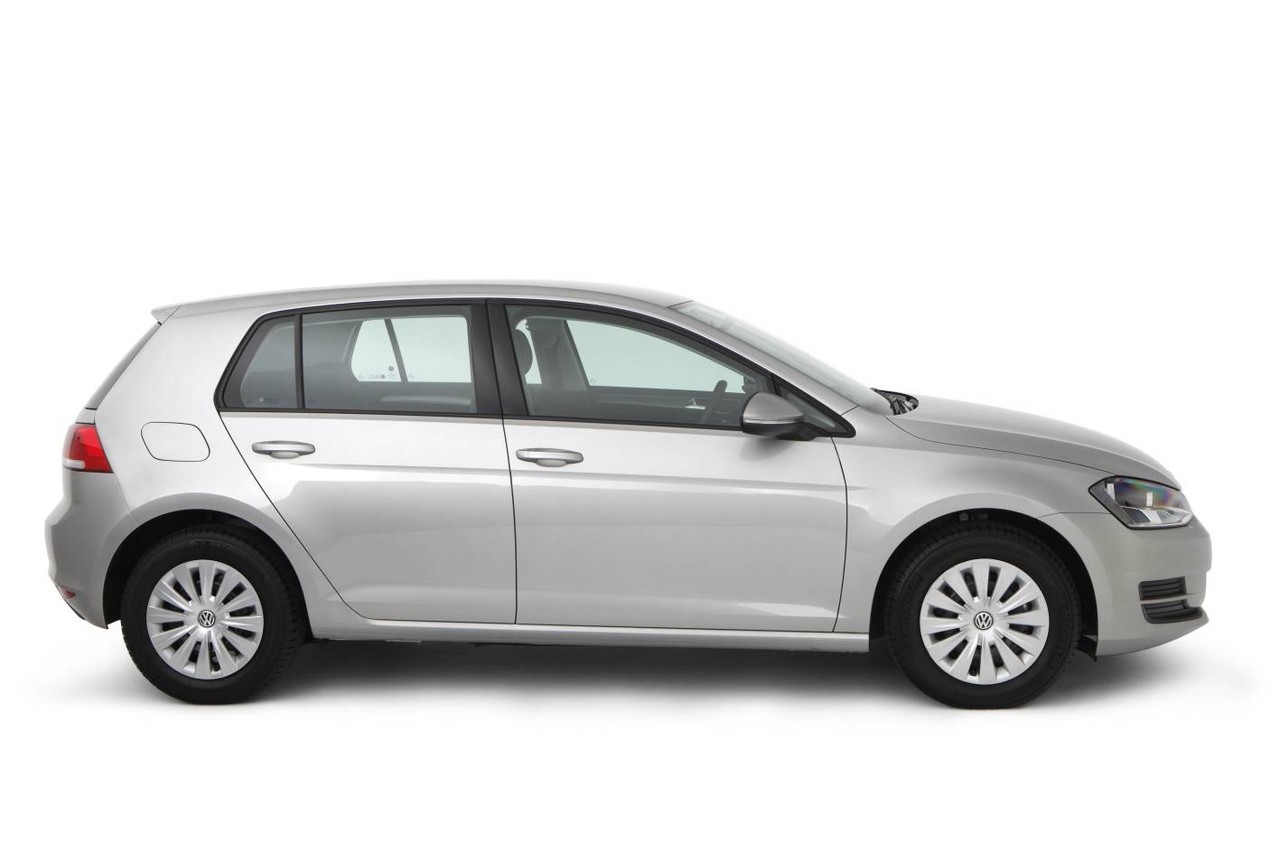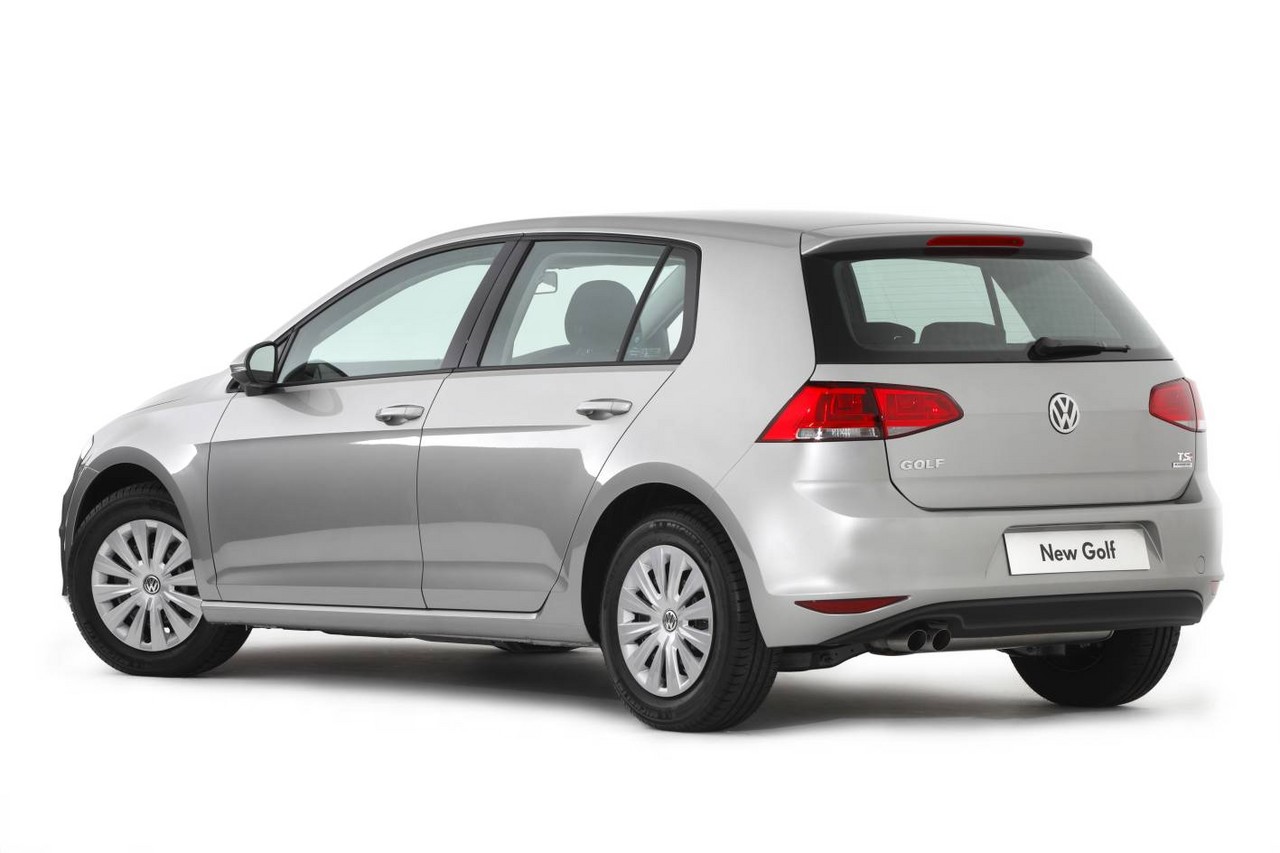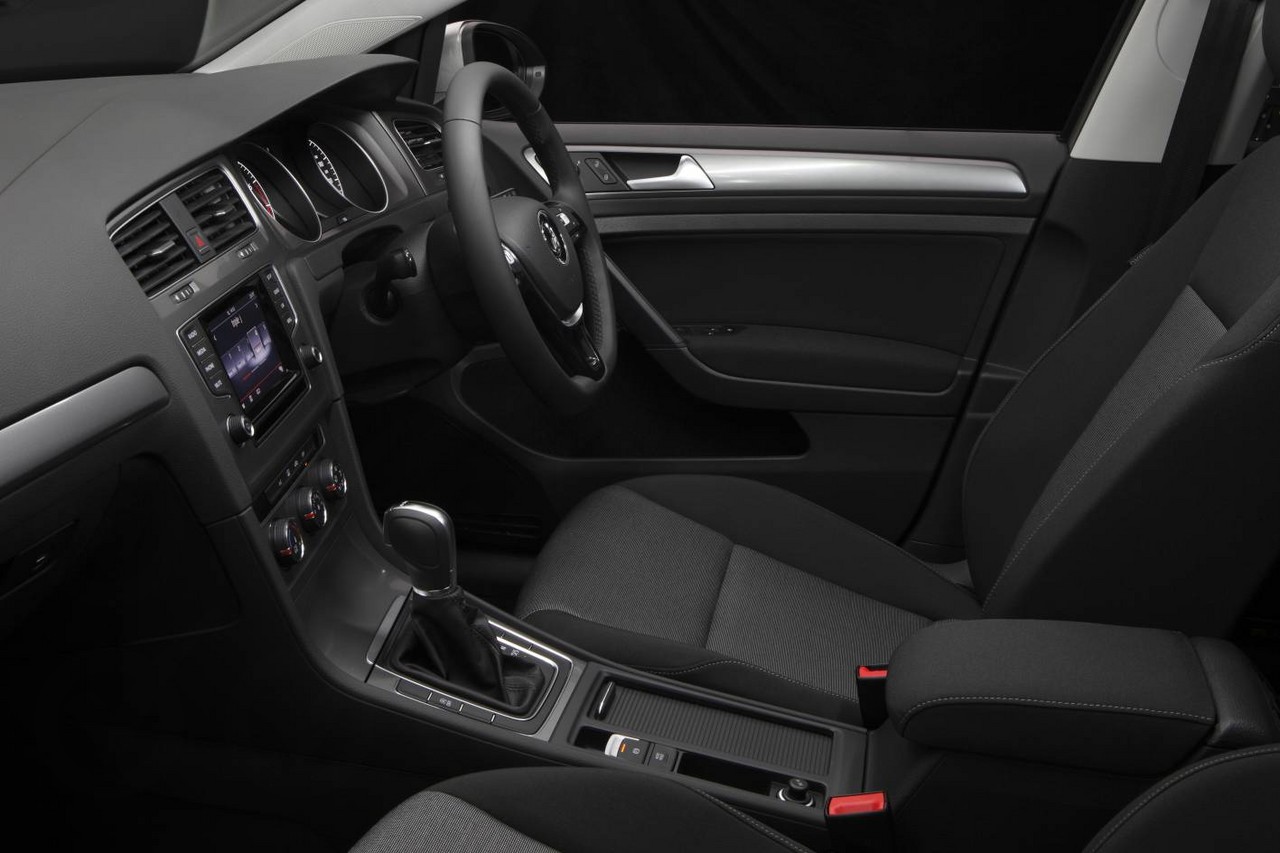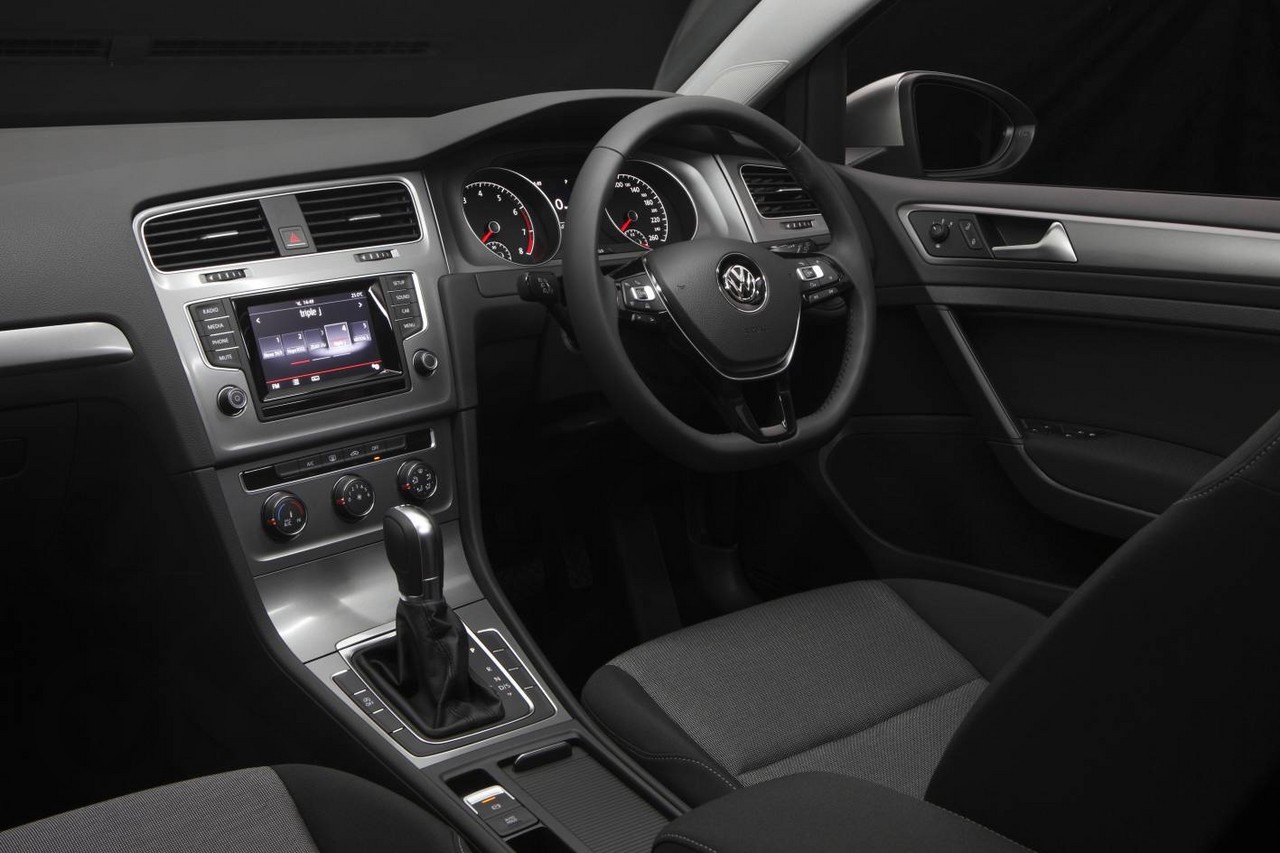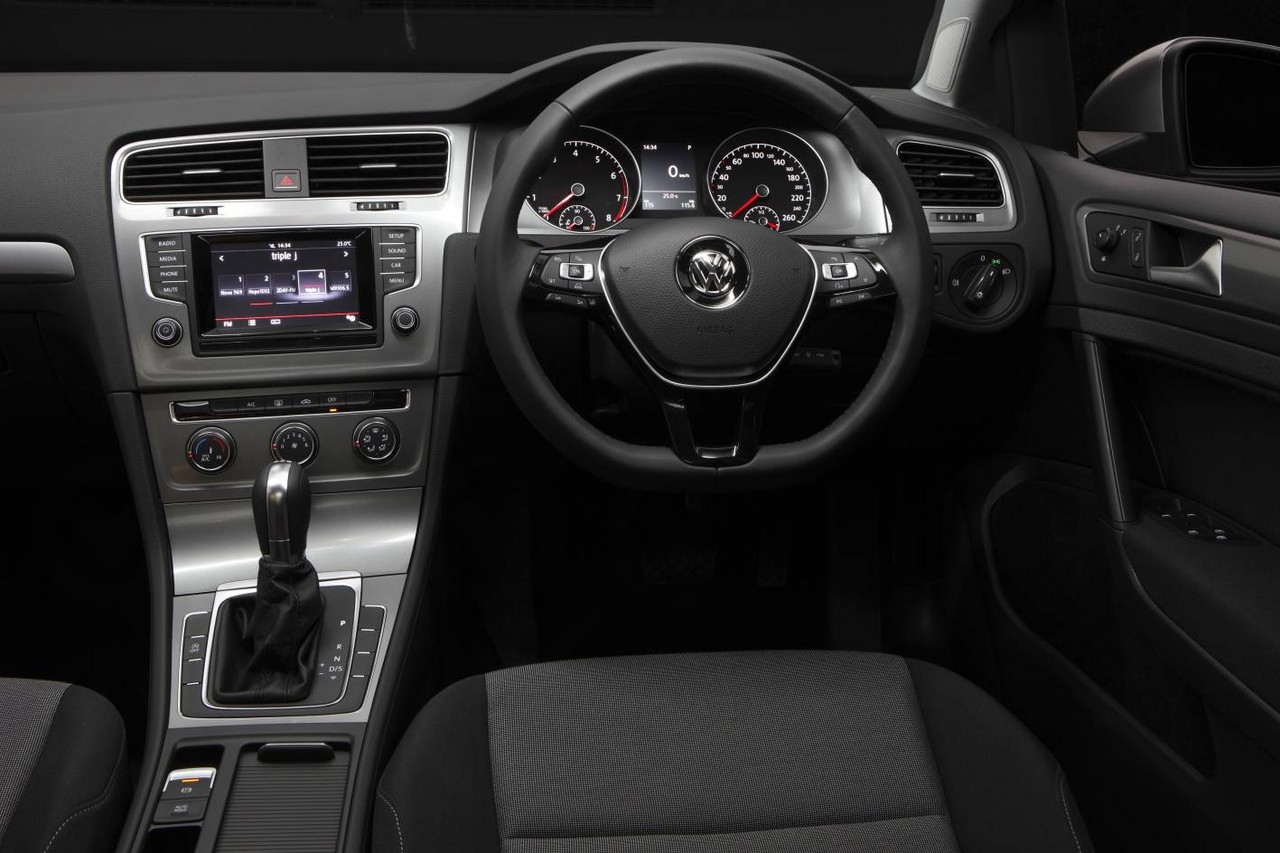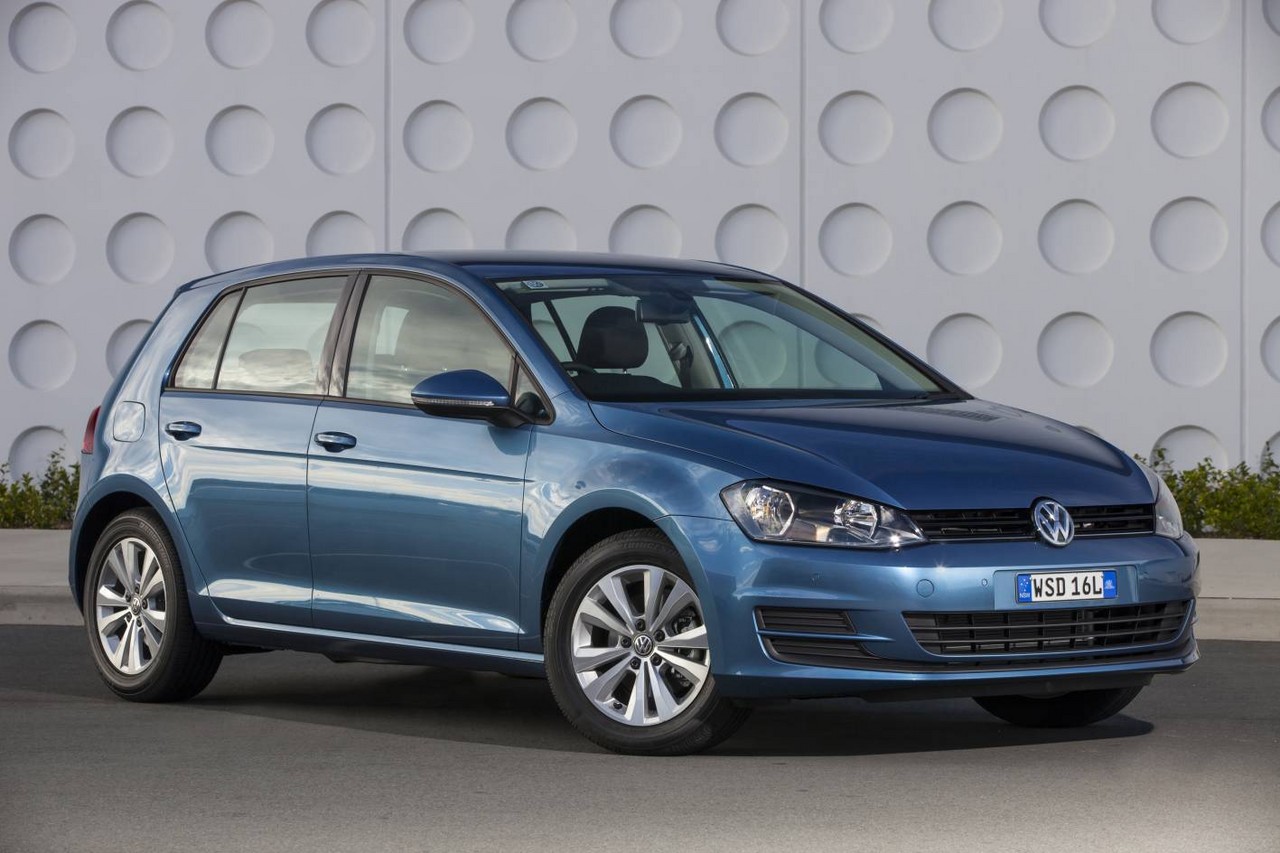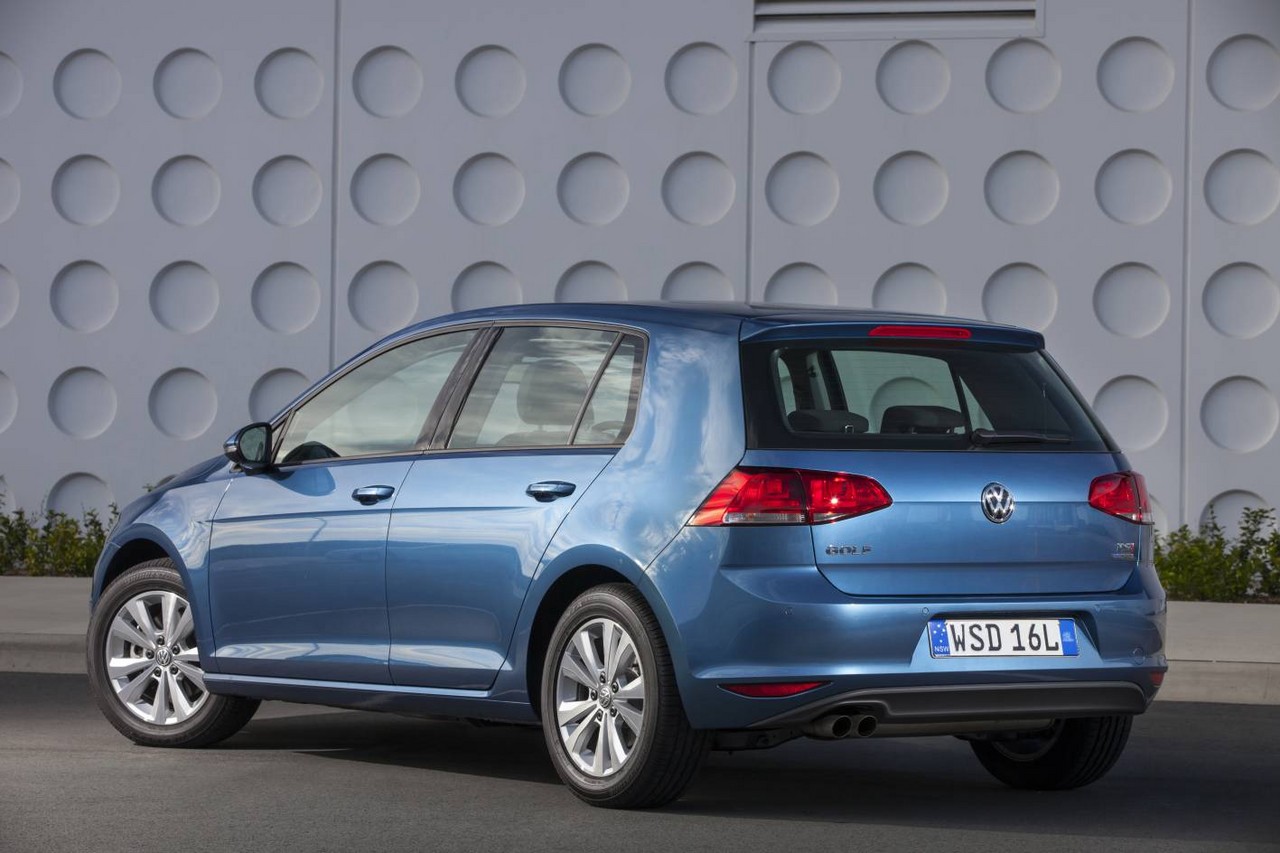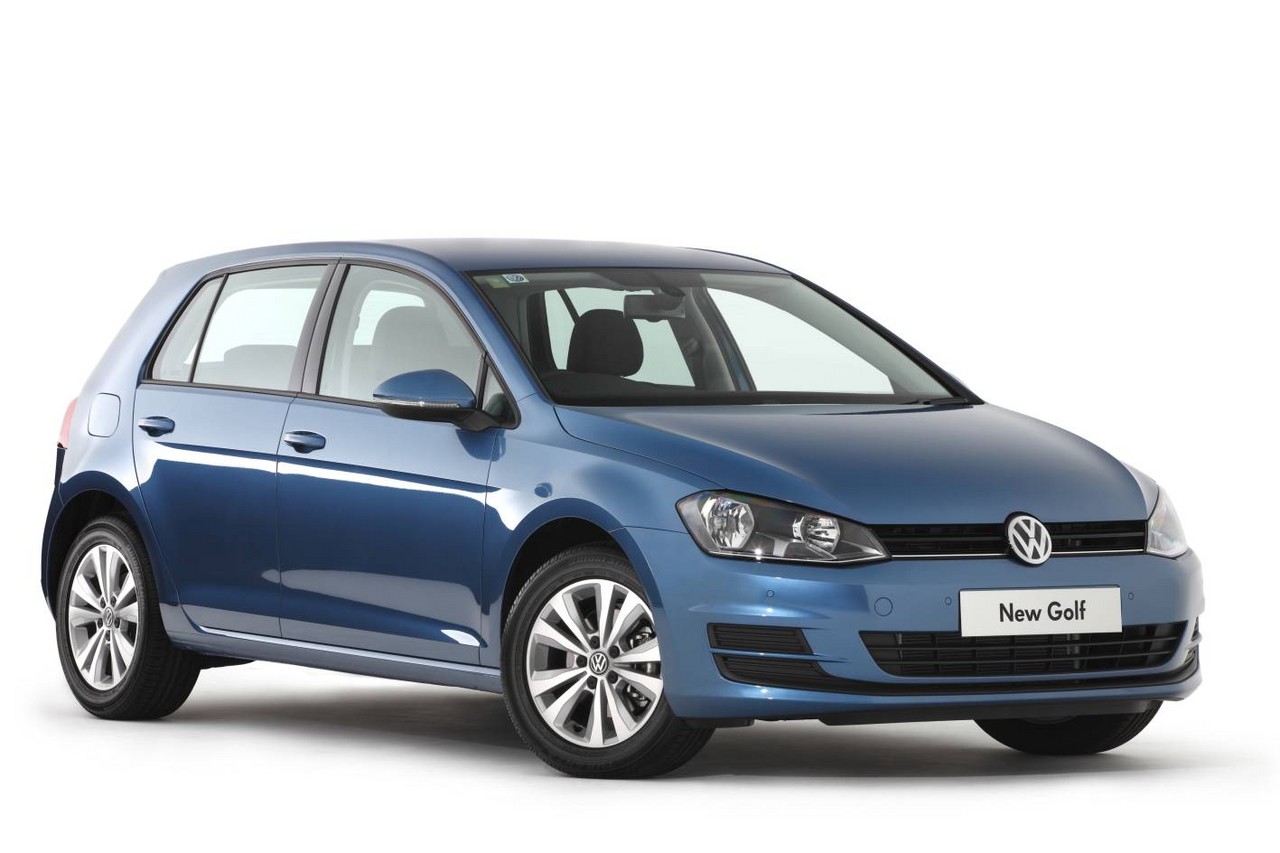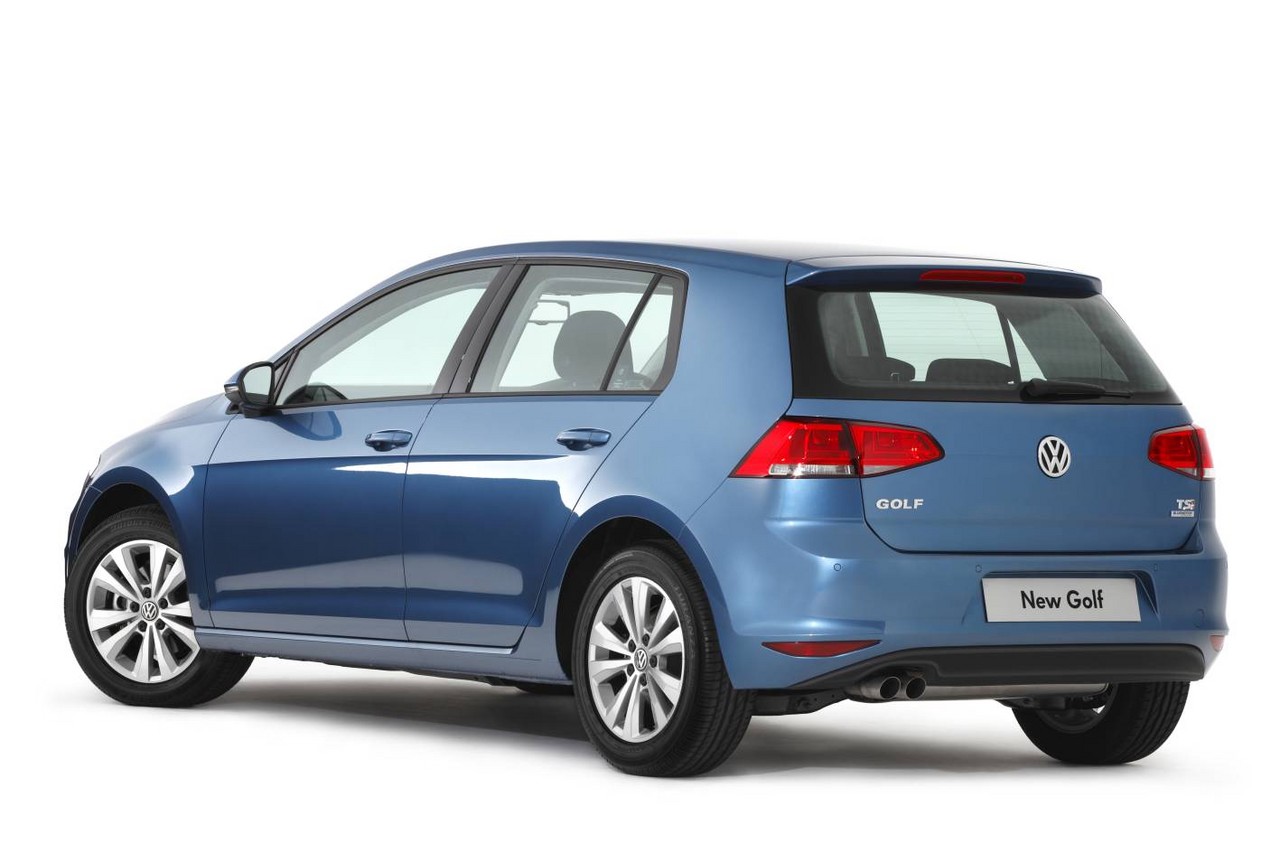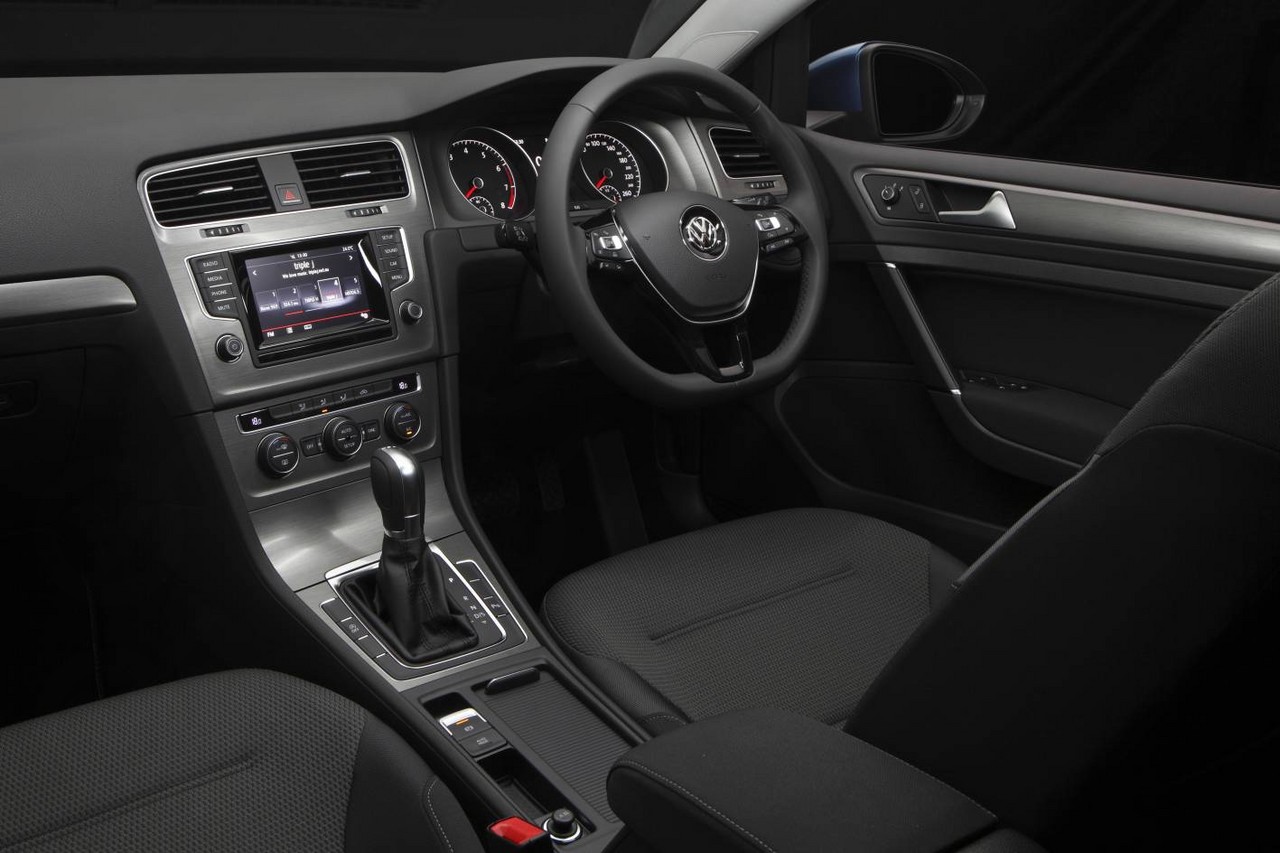
- Economical drivetrains
- Spacious interior and comfortable seats
- Quiet, well-insulated cabin
- Excellent ride/handling balance
- Accurate, well-weighted steering
- High standard of interior fit and finish
- 103TSI/110TSI noisy at higher revs
- DSG can hesitate when accelerating from rest
- For ‘Stop/Start’ function, engine slow to restart
Overview
Released in Australia in April 2013, the Volkswagen Mk.7 Golf was a small, five-door hatchback. Manufactured in Wolfsburg, Germany, the front-wheel drive Mk.7 Golf was powered by 1.4-litre turbocharged petrol engines (for the 90TSI and 103TSI variants) and 2.0-litre turbo-diesel engines (for the 110TDI variants). All engines, however, had a ‘Stop/Start’ function which enabled them to shut down when the vehicle was stationary in traffic to minimise fuel consumption.
In July 2015, the 90TSI and 103TSI were replaced by the 92TSI and 110TSI, respectively; a Trendline edition was also introduced for the 92TSI variant.
Please note that the related Mk.7 Golf GTi and Mk.7 Golf R have been reviewed separately.
| Variant | Engine | Years | Trans. | Peak power | Peak torque |
|---|---|---|---|---|---|
| 90TSI, 90TSI Comfortline |
1.4-litre CMBA turbo petrol I4 | 2013-15 | 6sp man., 7sp DCT |
90 kW at 5000-6000 rpm | 200 Nm at 1400-4000 rpm |
| 92TSI. 92TSI Trendline, 92 TSI Comfortline |
1.4-litre CZCA turbo petrol I4 | 2015-17 | 6sp man., 7sp DCT |
92 kW at 5000-6000 rpm | 200 Nm at 1400-4000 rpm |
| 103TSI Highline | 1.4-litre CHPA turbo petrol I4 | 2013-15 | 7sp DCT | 103 kW at 4500-6000 rpm | 250 Nm at 1500-3500 rpm |
| 110TSI Highline | 1.4-litre CZDA turbo petrol I4 | 2015-17 | 7sp DCT | 110 kW at 5000-6000 rpm | 250 Nm at 1500-3500 rpm |
| 110TDI Highline | 2.0-litre CRBC turbo-diesel I4 | 2013-17 | 6sp DCT | 110 kW at 3500-4000 rpm | 320 Nm at 1750-3000 rpm |
Dimensions and body
Compared to the Volkswagen Mk.6 Golf hatchback , the Mk.7 Golf was 150 mm longer (at 4349 mm), 14 mm wider (1799 mm), 22 mm taller (1491 mm) and had a 46 mm longer wheelbase (2620 mm); the drag coefficient was also reduced by 10 per cent to 0.27 Cd. The Mk.7 Golf, however, was underpinned by Volkswagen’s MQB (Modularer Querbaukasten) platform which was approximately 100 kg lighter than its PQ35 predecessor; the proportion of high-strength steels also increased from 66 per cent to 80 per cent.
Suspension and steering
The Volkswagen Mk.7 Golf had MacPherson strut front suspension and independent, four-link rear suspension.
The Mk.7 Golf introduced an electromechanical, variable ratio steering system which reduced steering effort for low-speed manoeuvres and offered selectable drive modes: Eco, Sport, Normal and Individual. Furthermore, an electronic differential lock was fitted as standard which could brake the inside front wheel when cornering to reduce understeer.
Safety equipment
Standard safety equipment for the Volkswagen Mk.7 Golf included dual front airbags, a driver’s knee airbag, front side airbags, full-length curtain airbags, ABS, electronic brake force distribution, brake assist, electronic stability control, traction control and front seatbelts with pretensioners and load limiters. Furthermore, the Mk.7 Golf was also fitted with:
- Fatigue Detection: monitored driver behavior at speeds in excess of 65 km/h for signs of fatigue. If the driver exhibited signs of fatigue, a tone would sound and a warning would appear in the multi-function display; and,
- Multi-collision brake: automatically braked the vehicle after a collision to reduce kinetic energy and minimise the likelihood of a second impact.
For the Comfortline and Highline editions, an optional Driver assistance package included:
- Adaptive Cruise Control (ACC): using a radar sensor, ACC could autonomously apply the vehicle’s brakes to maintain a preset distance to vehicle ahead. ACC could also cause the vehicle to accelerate to its pre-set speed after braking;
- Front Assist: Front Assist used a radar sensor to detect if the vehicle was closing too fast on the vehicle ahead. If this occurred, Front Assist would:
- provide audible and visual warnings to the driver,
- bring the brake pads into contact with the brake discs for an emergency stop; and,
- automatically apply the brakes to warn the driver.
- City Emergency Brake (City EB): at speeds below 30 km/h, City EB would monitor the road ahead for vehicles. If a collision was considered likely, City EB would prime the brakes and increase braking assistance. If the driver did not react and a collision was imminent, City EB would autonomously initiate emergency braking;
- Park Assist 2: could detect parallel parking space and provide automated steering for right angle and parallel parking; and,
- Proactive occupant protection system: in a potential accident situation, the seatbelts would be tensioned and windows closed.
If the driver failed to respond, Front Assist would apply the brakes automatically to avoid or reduce the severity a collision.
Euro NCAP testing
In Euro NCAP testing , the Volkswagen Mk.7 Golf received a five star safety rating which included a 94 per cent adult occupant protection rating and an 89 per cent child occupant protection rating. In the frontal offset crash test, occupant protection was generally assessed as good, though protection for the driver’s lower leg was rated as adequate. Maximum points were awarded in the side impact test though, in the more severe pole test, chest protection was rated as marginal and abdominal protection as adequate.
Under ANCAP’s assessment scheme , the Mk.7 Golf received a five star adult occupant protection rating with a score of 35.92 out of 37.
Features: Volkswagen Mk.7 Golf
Standard features for the Volkswagen Mk.7 Golf included 15-inch steel wheels with 195/65 R15 tyres, an eight speaker sound system with a CD player, MP3/WMA/ACC-compatibility, auxiliary inputs (SD card/3.5 mm/USB) Bluetooth mobile phone and audio streaming and a 5.8-inch colour touch screen, air conditioning, cruise control with a programmable speed limiter, daytime running lights, steering wheel audio controls, a leather-wrapped steering wheel and gearshift knob, 40/60 split and folding rear seats, remote central locking, power windows and heated mirrors, a height and reach adjustable steering wheel, an electromechanical parking brake, tyre pressure monitoring, a 12 volt power outlet in the centre console, a trip computer and an immobiliser.
Furthermore, all Mk.7 Golf models were fitted with a space-saving spare wheel.
Features: Golf Trendline
TGolf Trendline editions were further equipped with 15-inch ‘Lyon’ alloy wheels, rear view camera with static guidelines and distance to obstacles (Volkswagen’s ‘Optical Parking System’ or OPS), automatic headlights, rain-sensing wipers and an auto-dimming rear view mirror.
Features: Golf Comfortline
Relative to the Trendline, the Golf Comfortline editions added 16-inch ‘Toronto’ alloy wheels with 205/55 R16 tyres, dual-zone climate control air conditioning, ‘Comfort’ front seats with lumbar adjustment, front and rear parking sensors, ‘load through’ rear seats, automatic kerb function for the passenger side mirror when reversing, an additional 12 volt power outlet in the luggage compartment and draws under the front seats.
Features: Golf Highline
The range-topping Golf Highline editions were distinguished by their 17-inch ‘Dijon’ alloy wheels with 225/45 R17 tyres, satellite navigation with a 5.8-inch display, voice control for navigation and audio functions, contoured sports seats with alcantara trim, piano black interior trim, front fog lights, LED ambient lighting and carpeted floor mats. Visually, the Highline variants could be identified by the chrome highlights on the lower air intake and darkened tail-light clusters.
July 2015 update (‘MY16 Golf’)
Available from July 2015, standard features for the ‘MY16’ Golf were extended to include a 6.5-inch ‘Composition Media’ high-resolution touch screen display, ‘App-Connect’ USB interface for enhanced smartphone connectivity (including access to Apple CarPlay, Android Auto and MirrorLink) and a rear view camera.
The Golf Comfortline editions gained Volkswagen’s ‘Discover Media’ system with a 6.5-inch touch screen and satellite navigation. Furthermore, the Golf Highline editions were fitted with Vienna leather upholstery, heated front seats, proximity key (i.e. keyless access) and push-button start.
Volkswagen Golf R-Line
From October 2014, the Volkswagen Golf 103TSI and 110TDI Highline models were available with an optional R-Line package which added 18-inch ‘Salvador’ alloy wheels, sports suspension, an R-Line steering wheel with gearshift paddles, R-Line sports seats and interior trim, R-Line badging and stainless steel pedals. According to Volkswagen, the R-Line models also had more direct and agile steering response in dynamic driving situations.
Visually, the Golf R-Line could be identified by its R-Line exterior body styling which included a rear spoiler, unique bumpers and side sills.
Brochure
Specifications
- Specifications: Volkswagen Mk.7 Golf and Golf GTi (October 2013)
- Specifications: Volkswagen Mk.7 Golf (October 2014)
Related links
